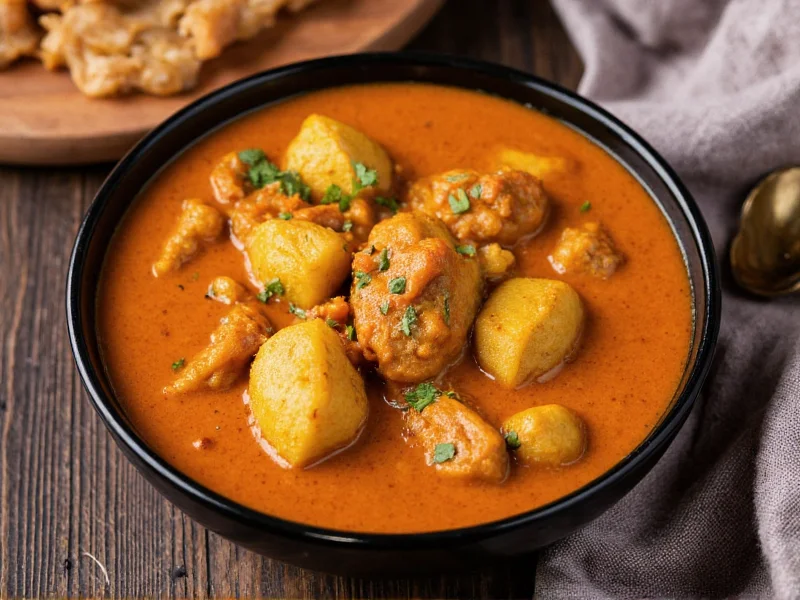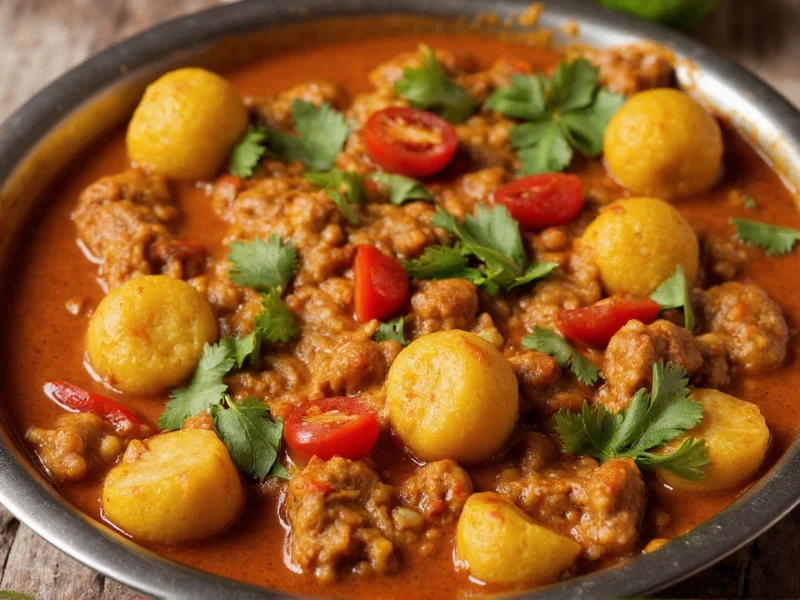Beyond the Powder: Unpacking Curry's True Identity
Most assume "curry" means an Indian stew with yellow sauce. This misconception stems from colonial-era simplification. In reality, no Indian language uses "curry" as a standalone term—dishes are named by region (e.g., rogan josh, madras). The British coined "curry" in the 1700s to categorize diverse South Asian spiced dishes, later commercializing it via curry powder. As food historian Lizzie Collingham notes, "Curry was invented by the British to make Indian food digestible for Victorian palates" (CurryFoodie).

Curry's Global Evolution: From Tamil Kitchens to Worldwide Staple
Curry's journey reveals how cultural exchange reshapes food:
- c. 1600s: Tamil-speaking regions of India used "kari" for spiced broths eaten with rice
- 1733: First "currey" served in London's Norris Street Coffee House (Wikipedia)
- 1820s: Britons adopted curry to use leftover meat; turmeric imports tripled as "curry powder" emerged
- 1940s-1950s: Bangladeshi ex-seamen opened UK curry houses, replacing fish-and-chips as national comfort food
- 1971: 65-75% of UK "Indian" restaurants were Bangladeshi-owned (CurryFoodie)
Global Curry Variations: Fact Comparison
| Region | Signature Ingredients | Key Cultural Context | Common Misconception |
|---|---|---|---|
| South Asia | Fresh turmeric, mustard seeds, curry leaves | "Curry" isn't used locally; dishes named by technique/region | "All Indian curries are tomato-based" (Coastal regions use coconut milk) |
| Thailand | Lemongrass, galangal, kaffir lime | "Kaeng" (spicy stew) differs from Indian curry | "Thai curry paste = curry powder" (Fresh paste vs. dried British blend) |
| United Kingdom | Curry powder, tomatoes, cream | Chicken tikka masala (UK invention) now exported to India | "British curry is authentic" (Adapted for local tastes) |
| Japan | Roux blocks, apples, honey | Introduced by British traders in 1868; mild and thick | "Japanese curry is spicy" (Typically mild, family-friendly) |
When to Use (and Avoid) the Term "Curry"
Applying "curry" correctly prevents cultural erasure:
✓ Correct Usage Scenarios
- Describing British-Indian cuisine: "Chicken tikka masala is Britain's national curry"
- Global commercial products: "Curry powder for quick weeknight meals"
- Caribbean adaptations: Jamaican "jerk curry" reflecting Indian indentured workers' influence
✗ Avoid These Misapplications
- Calling specific Indian dishes "curry" (e.g., say "butter chicken," not "butter curry")
- Labeling non-spiced stews as curry (e.g., beef stew with paprika isn't curry)
- Assuming all curries contain turmeric (Thai green curry uses none)

Spotting Authenticity: Quality Clues and Market Traps
Commercialization created pitfalls for consumers:
Authenticity Indicators
- Spice freshness: Traditional curries use whole spices toasted and ground fresh (not pre-mixed powder)
- Regional specificity: Menus listing "Madras," "Vindaloo," or "Korma" show cultural awareness
- No "curry" in Indian dish names: "Butter chicken," not "butter curry"
Common Market Traps
- "Authentic curry powder": Historically a British invention—no Indian household uses it as primary seasoning
- "Indian" restaurants with identical menus: Often indicate generic Anglo-Indian fare (65-75% of UK "Indian" restaurants follow this pattern per CurryFoodie)
- Over-reliance on turmeric: Authentic South Indian curries may omit it entirely
Debunking Persistent Misconceptions
Three myths that distort curry's story:
- "Curry is Indian food": While spice traditions originated in South Asia, "curry" as a concept was crystallized through colonialism. As chef Romy Gill states, "There's no 'curry' in India—it's a British umbrella term" (BBC).
- "Curry powder is traditional": First sold in London in 1780, it was created for British convenience. Authentic Indian cooking uses fresh spice blends.
- "All curry is spicy": Japanese curry is mild; Kerala fish curry uses black pepper not chilies; British "mild" curries dominate UK menus.
Everything You Need to Know
Spice traditions originated in the Indian subcontinent, but "curry" as a term was coined by British colonists. No Indian language uses "curry" for specific dishes—regional names like rogan josh or dhansak are authentic. The concept evolved globally through cultural exchange.
After WWII, Bangladeshi ex-seamen opened curry houses, filling a post-war food void. By 1971, they owned 65-75% of UK "Indian" restaurants (CurryFoodie). Chicken tikka masala—created in Glasgow—became so popular it now contributes £5 billion annually to the UK economy.
Stews focus on slow-cooked meat in liquid (e.g., beef bourguignon). Curries prioritize spice-forward sauces where spices are toasted and layered. While some curries use stewing techniques (like British lamb curry), the defining element is the spice profile—not cooking method.
No—curry powder was invented in 18th-century Britain for convenience. Authentic South Asian cooking uses fresh, region-specific spice blends. Pre-mixed powders lack the complexity of toasted whole spices and often contain fillers like flour. As noted by Historic UK, it's a colonial adaptation, not traditional practice.
Traditional curries using fresh turmeric, ginger, and garlic offer anti-inflammatory benefits. However, British-style curries often contain high saturated fat (from cream) and salt. Japanese curry roux blocks may include preservatives. For health benefits, choose tomato- or coconut milk-based versions with visible vegetables.










 浙公网安备
33010002000092号
浙公网安备
33010002000092号 浙B2-20120091-4
浙B2-20120091-4